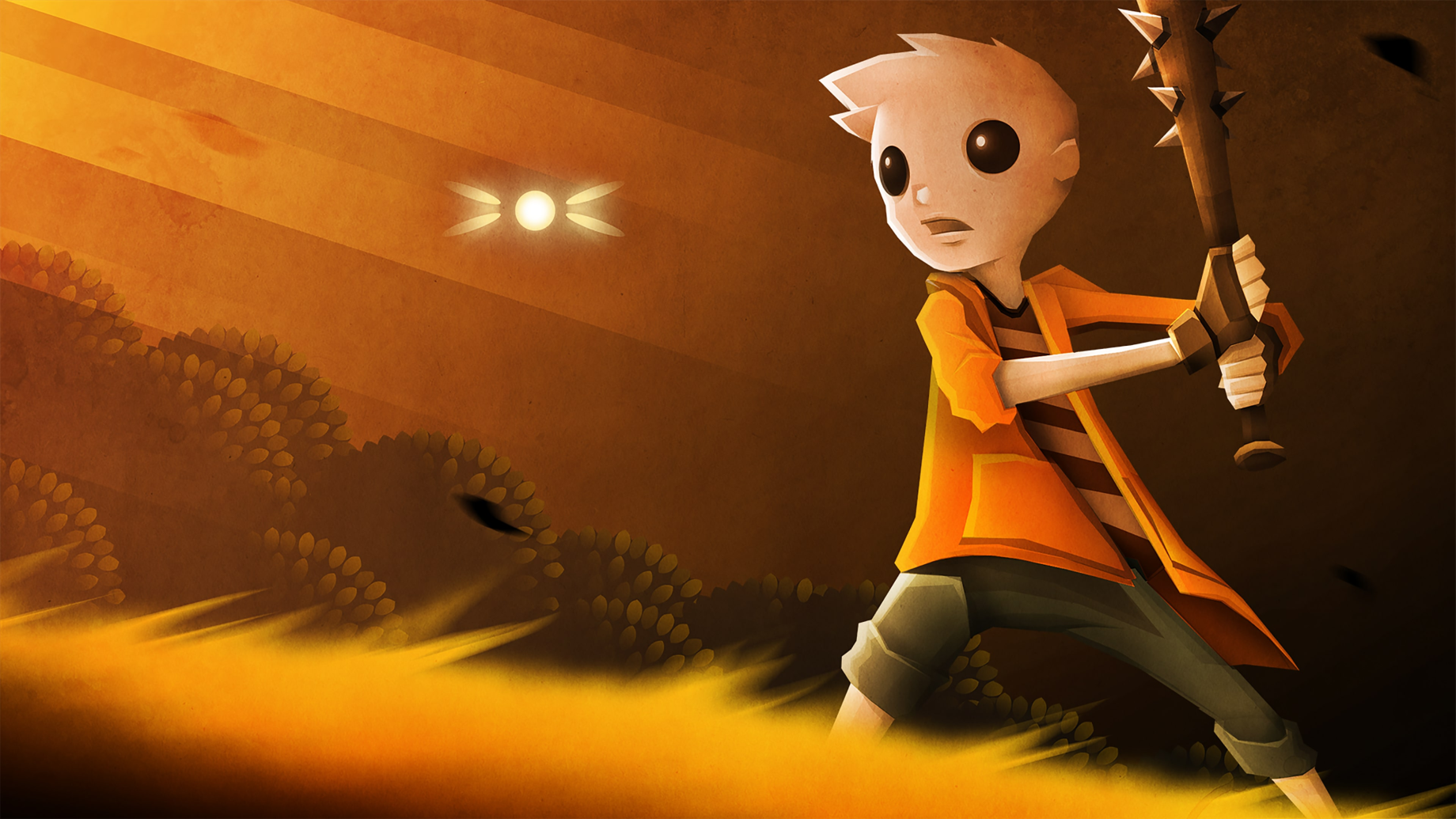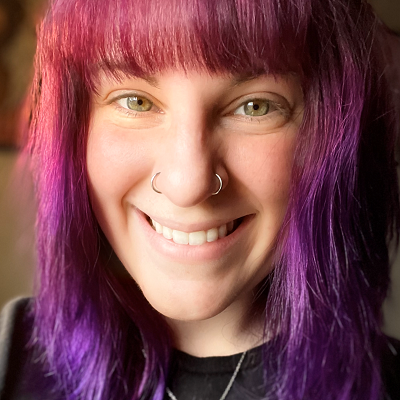Inspired By Zelda: The Quirky Horror of Neversong
Posted on October 05 2024 by Nicole Scott

Spoiler Warning: This article contains end-game spoilers for Neversong. If you’d prefer to experience the game for yourself, please bookmark this page for later reading.
We’re happy you’re here for another installment of Inspired by Zelda, an editorial series where we find the magic of the Zelda franchise in other games. We will be analyzing the horrifically cheeky game, Neversong, which released on PlayStation 4 October 31st, 2019 and other platforms in May 2020. It is a side-scrolling, low-stakes horror adventure RPG developed by Atmos Games and Serenity Forge, for which the latter also served as the publisher. The most important brain behind the magic was Thomas Brush, who was the game’s creator, designer, and composer. You can find it on Steam, Nintendo Switch, Xbox, PlayStation, and iPhones for $14.99 USD with an optional deluxe edition upgrade.
The Background and Storyline
If you’re familiar with the game’s origins but not Neversong, you’re probably wondering how this game could have Zelda-like elements. We will get there in time, but let’s unpack this game’s development story. Brush created a flash game called Coma in 2010, which you can still play on Armor Games. It was a side-scrolling platformer with a spooky atmosphere. Before Neversong reached its final form, it was actually called Once Upon a Coma when it took to Kickstarter with rousing success in 2018.
In the game, you play as the protagonist, Peet. You hear his plight from a mysterious narrator, speaking in poetry. You discover his love and friendship with a local girl, Wren, and they spent a lot of time together playing music and reading until they walked into Blackfork Asylum. A mysterious figure called Dr. Smile captured Wren, and Peet was in such distress, he fell into a coma. The community blames him for what happens next.
The game starts as you wake up (sounds familiar already), and your hometown’s adults have gone missing. It’s time to figure out what horrors became of them and find your best friend. How could any of this relate to the Zelda series at all?
The Darkness of Otherworldly Dungeons
The pacing of Neversong follows most traditional Zelda games. You go to a dungeon, or in this game, places like the Spiderian Sewers or Blackfork Asylum, and obtain an item that becomes relevant for the next series of puzzles you solve to progress through the story. Though instead of items like a bow or Hookshot, you acquire Wren’s baseball bat — the Redwind Slugger — and a neat skateboard, among other items. Each item adds another gameplay element. For example, the skateboard helps Peet race away from enemies or jump over difficult terrain. The umbrella works like Revali’s Gale, allowing Peet to ride updrafts to explore environments. As your kit fills, players feel a sense of exploration akin to a Zelda game.
After each item grab, you’ll unlock more areas to find the game’s main collectable: Cards! This extends the overall playtime if you’re a completionist. Each one adds a cosmetic upgrade to Peet’s design. The collectable card for “Red Wind Grass” contains the flavor text “The only reason this game is fun. It’s nice to cut and feels great on your feet.” Sounds like Link would enjoy mowing in this town, too! You can also collect hearts, but not in the same way as a Zelda game. Instead, you acquire little stars from destroying enemies. For every 100 you collect, you get an additional heart.
The dungeons may not include as complex of puzzles as most Zelda entries, but there are some light physics and jumping puzzles to take up your time. Sometimes you even have to defeat all enemies in an area to cause the environment to change or unlock a path. You even get an opportunity to have a companion in the dungeon with you to help solve some puzzles. The local bully, Simeon, has an ailment causing him to inflate like something out of Willy Wonka. Much like you use your friends in The Wind Waker to complete rooms, there is an equal opportunity here.
The bosses are a twisted, nightmarish form of the missing adults — Mrs. Richardson, Mr. Toyne, and Granny. These were haunting fights, because you know they were figures in the lives of the children you interacted with. Find, wake up, and defeat the three “sleeping monsters,” and you save the world. Three monsters in three dungeons sounds like a bite-sized Zelda game! Depending on your determination to fight enemies to collect stars, these boss battles could pose a challenge. The road leading to the final boss is also arduous! After all, only 3.4% of Steam players have earned the “Coma King” Achievement, which requires players to beat the entire game without dying.
The Healing Power of Music
“Remember our song, Peet.” — Wren
Each section of the game earns Peet some notes to play on Wren’s piano. The songs crystallize more of the chaos in Peet’s world, healing him as playing music did when he befriended Wren. Many songs in the Zelda series conjure hopeful, healing feelings in players and in NPCs — most famously “The Song of Healing.” It is inarguable that music is a pillar of the Zelda franchise, with each song representing touchstones in Link’s journeys in understanding, growth, and global restoration. The same narrative follows Peet through his morose circumstances.
This also feels like the prime opportunity to mention how chilling yet comforting Neversong’s soundtrack is. It fits the atmosphere beautifully, with enough trilling piano to harken to Peet’s affinity for the instrument. The beginning notes of the game’s theme, “Neversong,” sound like they could fit right in with Breath of the Wild.
The soundtrack also shines in the Redwind tracks, “Redwind Village” and “Redwind Field,” which highlight the game’s whimsy and sense of adventure. However, there is a creeping, dark ambiance in many of the tracks, including “Calm Before the Storm” and “The Twisting Hall.” These show what you can create in music with a little restraint. The game’s closer, aptly titled “The End,” has a sense of triumph about it but never loses its melancholic edge.
The Off-Kilter Conversations of Village NPCs
Neversong features a character called Bird, and the parallels are obvious just by looking at the character artwork. Bird is a stand-in for Navi, a sassy yet wise guide on Peet’s journey. After each song unlock, Bird has tips on where you should go next based on coincidentally relevant observations she made before everything went awry. She’s the only character that’s an overt homage to Zelda characters, but others moreso embrace the energy of the series’ bizarre and quirky NPCs.
Most of your time is spent in various areas surrounding Peet’s hometown, Redwind Village. Something about it feels like the otherworldliness of Termina. It feels like a world adjacent to reality, as if it was created in rationale but tilted on its axis. The NPCs of the world feel a lot like the semi-surreal conversations Zelda players have in games like Majora’s Mask and even Link’s Awakening. Here are just a few examples that give a mischievous yet haunting appeal.
The game has a club of children called the Booty Bum Gang. The brashness of this crew reminds me of the Bombers Secret Society of Justice. Another character, Preston, gives a similar energy to Robbie or Purah, as an adamant researcher-type. He even helps Peet by snapping a photo of a lead to help him on his first dungeon. Another character, the pale Punky, spends his time dancing alone, much like Kamaro. Finally, you find the diary of the aforementioned bully, Simeon, later in the game. His animosity is bred from his jealousy of Peet’s relationship with Wren, akin to the secret romantic, Groose.
“I now know my task. I, her knight in shining armor, shall save her and protect her. In spite of my phobia, I shall enter The Spiderian Sewer…” — Simeon, regarding Wren
Many of the other children claim they want to find their parents with plans to search for them. However, they often distract themselves with other menial tasks, like jump-roping or playing hide-and-seek. The way the community downplays the severity of the situation, almost making it trivial, feels like Zelda NPCs who can’t be bothered a Calamity or world-ending event is happening. They have their own agenda, and expect the hero to save the day for them.
The Permeation of Grief and Trauma
The NPCs are arguably in a state of denial, which threads into some of the game’s overarching themes. Loss, grief, and trauma are some of the most important, along with the fragility of memory. The game’s content warning at the beginning describes itself as a “moving story of loss and hope,” even though it spans such a bleak and strange world. Peet moves around his world, occasionally hearing the strange poetry from the game’s narrator as he recalls moments of horror he and Wren experienced in Blackthorn. This feels like the environmental storytelling of Breath of the Wild.
At the end of the game, Peet returns to the Asylum where Dr. Smile captured Wren and he fell into his coma. The place is like a universe displaced in time, where the NPCs you interacted with throughout the story have aged dramatically. After wandering around the darkness, Peet faces Mr. Smile — a manifestation of Peet’s darkest aspects. It reminded me of Dark Link.
Players discover this world is the continuing coma Peet finds himself in. The game’s events are a representation of Peet spiraling into grief and coping. He was the head of the Blackfork Asylum in his town, and neglect of his wife, Wren (who is revealed to be Bird), caused her unfortunate passing due to a pre-existing condition. Link has never been a perfect hero. In fact, one of Zelda’s diaries in Breath of the Wild reveals he carries his burdens with great severity, leading to his vow of silence. Being asleep for a hundred years in this timeline, as well as missing in action during the events of Ocarina of Time, would weigh heavily on anyone wanting to only leave a positive impact.
While the dialogue sometimes comes off as crass, the meat of Neversong is poetic yet burdening. It reminds players of the darker atmospheres across Zelda with charming gameplay to match. It’s short enough to kill an autumn afternoon, just in time for spooky season.
Did you play Coma or Neversong? Did you pick up on the Zelda vibes despite the creepy artistic lean? Let us know if you play it and what your thoughts are in the comments below!

Nicole Scott is writer for Zelda Dungeon from suburban Appalachia. She loves drinking espresso, seeing live music, building LEGO sets, being a completionist, and snuggling her two probably-alien cats, Tizo and Alarielle.









